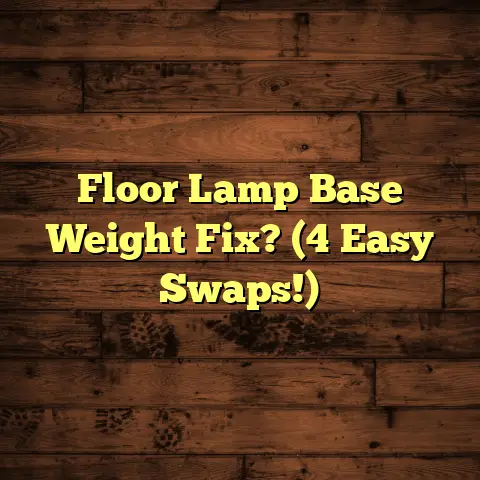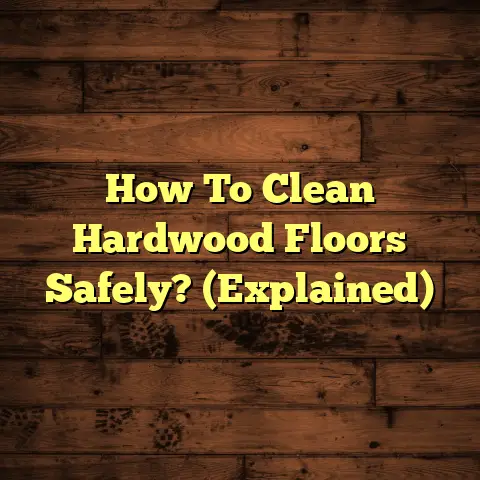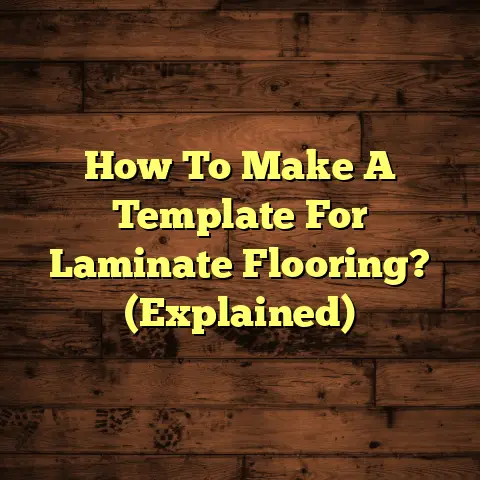Moisture Barrier Laminate Worth It? (Lose $2000?)
And with the seasons changing, I know many of you are thinking about your floors. Especially if you live somewhere with crazy humidity, rain, or snow.
Choosing the right flooring can feel like a gamble, especially when you’re bombarded with options promising the world. One option that comes up a lot is moisture barrier laminate.
Is it the real deal, or just a way for companies to charge you more? Let’s dive in and figure out if moisture barrier laminate is worth the investment, or if you might be throwing away your hard-earned cash.
Understanding Moisture Barrier Laminate
So, what exactly is moisture barrier laminate?
Think of it as regular laminate flooring, but with superpowers. Unlike traditional laminate, which can swell and warp when exposed to moisture, moisture barrier laminate has a special layer designed to resist water penetration.
This layer is typically a tightly sealed core board, often made of high-density fiberboard (HDF) treated with water-repellent chemicals. Some even have an underlayment attached with its own moisture-blocking properties.
A Little History
Laminate flooring first hit the scene in the late 1970s, offering a cheaper alternative to hardwood. Over the years, manufacturers have worked hard to improve its durability and appearance.
The development of moisture barrier technology was a game-changer. It addressed one of laminate’s biggest weaknesses: its vulnerability to water damage.
The Cost Factor: How Much Are We Talking?
Let’s get down to brass tacks: how much does this stuff cost? On average, you can expect to pay anywhere from $2 to $5 per square foot for standard laminate flooring.
Moisture barrier laminate, on the other hand, typically ranges from $3 to $7 per square foot. That might not sound like a huge difference, but it adds up quickly, especially if you’re flooring a large area.
The $2000 Question
Where does that $2000 figure come from? Well, let’s say you’re flooring a 500-square-foot living room.
- Standard Laminate: 500 sq ft x $4/sq ft = $2000
- Moisture Barrier Laminate: 500 sq ft x $6/sq ft = $3000
That’s a $1000 difference right there! Now, factor in installation costs, which can easily add another $1 to $3 per square foot, and you could be looking at a total difference of close to $2000.
I know, it’s a big number.
Benefits of Moisture Barrier Laminate: What You Get for Your Money
Okay, so it costs more. But what do you get for that extra investment?
- Protection Against Moisture: This is the big one. Moisture barrier laminate is designed to withstand spills, leaks, and even high humidity levels without warping or buckling.
- Ease of Maintenance: Like regular laminate, moisture barrier options are easy to clean. A quick sweep and a damp mop are usually all you need.
- Aesthetic Appeal: You don’t have to sacrifice style for function. Moisture barrier laminate comes in a wide range of styles and colors to match any décor.
Real-Life Wins
I’ve seen firsthand how moisture barrier laminate can save the day. I had a client with three kids and a dog. They installed it in their kitchen and dining area. Spills were constant, but the floors held up beautifully.
They told me it was the best investment they ever made. That kind of peace of mind is hard to put a price on.
Risks and Drawbacks: Is It Always the Best Choice?
Now, let’s be real. Moisture barrier laminate isn’t always the perfect solution. There are some potential downsides to consider.
- Price Concerns: As we discussed, it’s more expensive than standard laminate. If you’re on a tight budget, the extra cost might be a deal-breaker.
- Installation Challenges: While generally DIY- friendly, some moisture barrier laminates can be tricky to install, especially if they have complex locking systems.
- Possible Overkill: If you live in a dry climate and your home is well-ventilated, you might not need the extra protection.
When It Might Not Be Necessary
I remember one client who lived in a desert climate. They were convinced they needed moisture barrier laminate throughout their entire house.
After inspecting their home, I realized it was completely unnecessary. Their home was dry and well-maintained. I advised them to save their money and go with standard laminate.
Seasonal Considerations: When Moisture Matters Most
Here’s where things get interesting. Seasonal changes can have a huge impact on moisture levels in your home.
- Spring: Melting snow and increased rainfall can lead to higher humidity levels, especially in basements.
- Summer: Humid air can seep into your home, causing condensation and potential water damage.
- Fall: As temperatures drop, condensation can form on windows and walls, leading to moisture problems.
- Winter: Snow and ice can be tracked indoors, increasing the risk of spills and water damage.
If you live in an area with distinct seasonal humidity fluctuations, moisture barrier laminate can be a smart, proactive solution.
The Decision-Making Process: How to Choose Wisely
So, how do you decide whether moisture barrier laminate is right for you? Here are some factors to consider:
- Climate: Do you live in a humid or rainy area?
- Home Location: Is your home prone to flooding or basement moisture?
- Personal Lifestyle: Do you have kids or pets who are prone to making messes?
- Budget: Can you afford the extra cost of moisture barrier laminate?
Comparison Chart
| Feature | Standard Laminate | Moisture Barrier Laminate |
|---|---|---|
| Price | Lower | Higher |
| Moisture Resistance | Low | High |
| Maintenance | Easy | Easy |
| Best For | Dry climates | Humid climates |
Expert Opinions and Industry Insights
I’m not the only one with opinions on this topic. I’ve talked to other flooring experts who share my views.
One contractor I know, Mark, put it this way: “Moisture barrier laminate is like insurance. You might not need it all the time, but when you do, you’ll be glad you have it.”
The flooring industry is constantly evolving, with new moisture barrier technologies being developed all the time. Keep an eye out for products with enhanced waterproof cores and improved locking systems.
Real-Life Scenarios: The Good, the Bad, and the Ugly
Let’s look at some real-life examples of homeowners who chose to install moisture barrier laminate:
- Scenario 1: The Kitchen Disaster A family installed moisture barrier laminate in their kitchen. A pipe burst while they were on vacation, flooding the entire room. The laminate held up remarkably well, preventing major structural damage.
- Scenario 2: The Basement Renovation A homeowner renovated their basement and installed moisture barrier laminate. They live in a humid area with a history of basement moisture problems. The laminate has performed flawlessly, keeping their basement dry and comfortable.
- Scenario 3: The Buyer’s Remorse A homeowner installed moisture barrier laminate throughout their entire house, even though they live in a dry climate. They later regretted the decision, feeling like they had wasted money on unnecessary protection.
Conclusion: Making the Right Choice for YOU
So, is moisture barrier laminate worth it? The answer, as you might have guessed, is it depends. There’s no one-size- fits-all answer.
Consider your climate, your home’s location, your lifestyle, and your budget. Weigh the pros and cons carefully. Talk to a flooring professional.
Ultimately, the right choice will depend on your specific needs and your home environment. Don’t be afraid to ask questions and do your research.
Choosing flooring can be tough, but with the right information, you can make a decision you’ll be happy with for years to come. Good luck!





